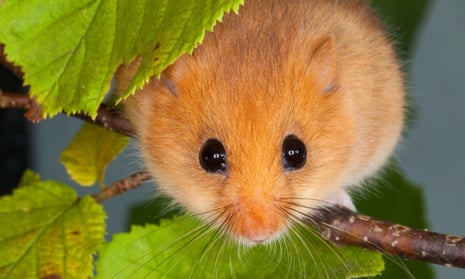Measuring 12 metres long and just 30cm wide, it’s a bridge of miniature proportions.
But it is hoped that the square metal tube – set to become the first “dormouse bridge” across a UK railway – could help to save Britain’s endangered wild hazel dormouse population from extinction.
The new bridge, which hopes to connect two new dormouse populations in Morecambe Bay, is to be fitted to the side of an existing bridge in summer 2022 on the Furness line in Lancashire.
Based on a tried and tested Japanese design, three similar bridges have already been put up in the UK – two over the M1 and one in St Athan in south Wales. But this latest project marks the first time a dormouse bridge will be built across a British railway.
Britain’s tree-dwelling hazel dormouse population has been in steady decline since 1950, but in the last two decades it has halved. The species has declined by 51% since 2000 and disappeared from 17 English counties, a 2019 report by conservation charity the People’s Trust for Endangered Species (PTES) found.
One of the main reasons for their decline is loss of quality woodland habitat, but insufficient connecting hedgerows and climate change are also factors, said Ian White, the dormouse and training officer at PTES.
He said the 30 dormice they reintroduced to the Arnside and Silverdale area of outstanding natural beauty has got off to an “excellent start”, with at least 12 litters born this year. “We hope that this new bridge will enable two neighbouring populations to create a local metapopulation in the area, which will really to help bring this rare and beautiful species back from the brink.”
As well as connecting two populations, to be reintroduced on either side of the track, the bridge will also act as a potential hiding place from predators.
The dormice will be encouraged to cross the bridge by putting dormouse boxes, or homes, near the entrance to the bridge. By connecting the two populations, it is hoped they will be encouraged to mate, look for food and find better nesting sites.
Fragmented populations are especially bad for genetic diversity, said White, adding that he hopes this dormouse bridge will be “the first of many” across railways.
He said he is “confident” the dormice will use the bridge if all goes to plan with the reintroduction. When they first tested the design on the Isle of Wight they had dormice on it in just nine hours.
The £40,000 conservation project, funded by Network Rail, is being constructed by the consultancy Animex, which works to find mitigation solutions for wildlife.
Rory Kingdon, a senior sponsor from Network Rail, said they are “delighted” that hazel dormice will be encouraged to breed by the bridge, “so they have a fighting chance to thrive for generations to come”.
“Network Rail is committed to improve biodiversity and protect habitats for the future,” Kingdon added.
